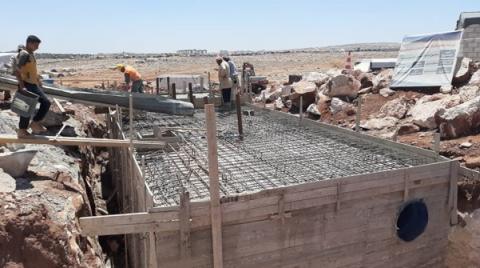Piloting septic tanks as a long-term containment and treatment option
Description of the emergency context
In Northwest Syria (NWS) there are over 1,400 formal and informal IDP sites, hosting around 1.7 million IDPs. Most of these sites are clustered close to the Turkish border and were established in low-lying areas which were previously used for agriculture. The humanitarian situation in these sites are dire, and depends heavily on humanitarian assistance. The WASH assistance in NWS was mainly focused on providing emergency distributions of water through trucks, desludging of cesspits, solid waste management, hygiene kits distribution and hygiene promotion activities. Therefore, there was an urgent need to find long-term and sustainable solutions and interventions to decrease the dependency of IDPs on humanitarian assistance and improve the living conditions of IDPs living in these sites.
Description of the treatment process
The project piloted a 3-chamber communal septic tank design supported by a study to investigate its efficiency and possible treatment steps that can be added to the system. Implementation was done in partnership with the following implementing partners: ACU, Watan, Saed and Bonyan, with support from different international and funding organizations. The intervention targeted about 14 camps, 4 informal camps and 10 planned camps.
Focus was on provision of better containment and treatment of wastewater, with the aim to reduce overflow of wastewater in camps thus protecting public health, and doing no harm to the environment, as well as preventing breeding sites for mosquitoes and sand flies, therefore reducing spread of malaria and leishmaniasis.
The implemented communal septic tank is a multi-chamber tank with a minimum volume of 50 m3 in some camps and maximum of about 166 m3 in others. The systems receive a peak flow of about 1.3 to 2.6 m3/hour and 0 - 0.9 m3/hours off peak attaining hydraulic retention times varying from 2-15 hours. Wastewater is collected by a simplified gravity sewer line. The network is not extensive since its a decentralized system. Bar screens trap screenings before the manhole and the septic tank. Sludge and screenings is usually transported by vacuum trucks and buried far away from camps. However, there's no authority inspecting or enforcing this but rather its stewardship of various implementing partners and desludging service providers.


Add new comment